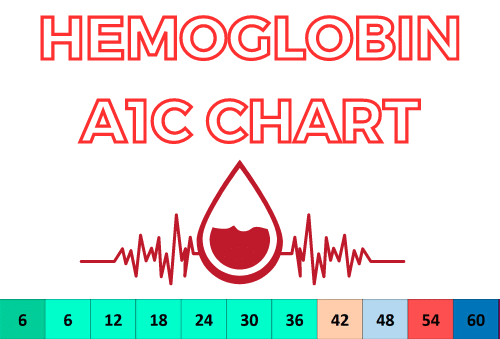How Does Exercise Help with Diabetes Management
From 1980 to 2014, the number of people living with diabetes worldwide rose exponentially from 108 million to 422 million. Some of the most recent statistics in 2021 place the number at 547 million adults aged from 20 to 79 years old who are living with diabetes. That’s 1 in 10 adults. By 2030, this number is projected to rise to 643 million by 2030.
These statistics have not yet even factored in the number of people with Impaired Glucose Tolerance (IGT), a condition that falls under the spectrum of prediabetes which is 544 million. Any way you look at the picture, the numbers are simply staggering.
There are many factors that contribute to the continuing prevalence of diabetes worldwide. While a lot of interventions focus on biological and behavioral factors which include symptoms, diet, and physical activity, there are also social and physical determinants involved such as employment, income, and education. However, physical activity ranks high among the ways that may help you manage your diabetes symptoms.
Diabetes and Exercise
Exercise plays a key role in diabetes management. Being physically active and on the move can make your body more sensitive to insulin, the hormone that allows your cells to use sugar for energy. It can also help control your blood sugar levels as well as reduce the risk of heart disease and nerve damage.
Physical activity also provides a lot of other benefits for diabetics: such as:
- Weight loss or maintenance of healthy weight
- A happier disposition
- Better sleep quality
- Improved memory
- Blood pressure management
- Raised good cholesterol levels
- Lowered bad cholesterol levels
- Prevention of complications such as cardiovascular and peripheral artery disease, anxiety, and depression
How does exercise affect blood sugar
Physical activity and exercise are key elements in the prevention and management of diabetes, especially type 2 diabetes. Research studies have now established the fact that participation in regular physical activity improves blood glucose control and can help prevent or delay type 2 diabetes.
What’s more, exercise can also have positive effects on lipids and blood pressure, prevent cardiovascular events, influence levels of mortality, and promote a better quality of life.
Studies have also shown that the use of structured interventions that combine physical activity with weight loss has lowered the risk of type 2 diabetes in high-risk populations by as much as 58%.
Exercising with diabetes: ideal exercises for diabetes management
The exercise guidelines for adults recommend at least 150 minutes of moderate-intensity physical activity weekly. Some good examples of these activities are the following:
- Brisk walking
- Gardening and mowing the lawn
- Dancing
- Swimming and water aerobics
- Riding the bike
- Participating in sports
It is also recommended that this is supplemented by at least two days of resistance training, using bodyweight, free weights, resistance bands, or machines to train all the major muscle groups of the body (legs, back, hips, chest, shoulders, abs, and arms).
There are studies suggesting that physical activity is most effective in bringing chronic and acute insulin action improvements through the use of both aerobic and resistance exercises.
Stretching exercises can also help in keeping you flexible as well as ward off soreness after working out.
How to get started on exercise
Physical activity is an excellent prescription for better health. This holds true for everyone. For people living with diabetes, regular exercise is important in;
Here are some tips on how to get started:
- Find an activity that you find fun and interesting – for exercise to be effective in managing diabetes, it should be done regularly. Finding something that you really like is important as it will determine your long-term success.
- Ease into a routine – start small and build on it. There are little things that you can do to ease into a more active life: use the stairs instead of the lift at the office; park far from the mall entrance so you can put in extra steps; bike instead of bringing the car to work. Remember that little things add up.
- Set a goal and have fun with it – having a realistic objective and setting out to accomplish it can be a big confidence booster. Some examples: walk five blocks daily. Do an hour of yard work every other day.
- Put it in your calendar – you write your to-do list every day at the office so you can make sure you get all the important jobs to be accomplished. Doing the same for exercise can help you find the time. Give it at least three weeks – a period when an activity becomes a habit as studies have shown.
- Buddy up – having an exercise partner can help you find the motivation to exercise even on the days when you find it difficult to sustain the routine. Being accountable for someone else’s health can also serve as extra motivation.
- Get expert advice and guidance – if you’ve been sedentary for a while or do not know where to start and how to choose an exercise routine, it’s best to consult with an Accredited Health Professional such as an Exercise Physiologist (EP). Your EP will be able to help sort out the exercise program that best suits your health condition and goals after a thorough assessment. Not only that but your EP will also help guide you on the proper exercise form so you can train safely.
Blood sugar and exercise: Some important reminders
Some experts recommend exercising one to three hours after a meal. For diabetics using insulin, it is imperative to test your blood sugar before exercising. A reading below 100 mg/dL means you must eat a small snack like a piece of fruit to boost it and avoid hypoglycemia. Another test after 30 minutes will show you if your blood sugar level is stable.
Wearing a medical bracelet indicating you are diabetic and/or taking insulin is advisable. You may also keep glucose tablets or candies handy while exercising should your blood sugar level drop drastically while exercising.
After a strenuous activity or workout, it may be prudent to check your blood sugar again. For diabetics taking insulin, the risk of hypoglycemia is highest from six to 12 hours after exercising.
Diabetes and exercise: A sweet conclusion
While a diagnosis of diabetes may be life-changing, you can still live a long and healthy life by observing smart management strategies. These include increased levels of regular physical activity, a healthier diet, and weight loss. Remember that exercise is a cornerstone of effective diabetes management and making the right changes in your level of activity can spell the difference between a life full of health or one that is less fun and fulfilling.
References:






